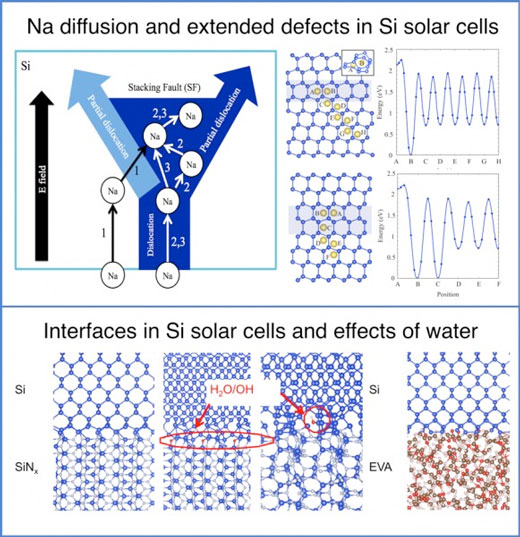| Jul 31, 2018 | |
The quest for longer-lasting solar cells(Nanowerk News) One hurdle to greater adoption of solar power is the performance and longevity of solar cells. |
|
| Maria Chan, nanoscientist at Argonne’s Center for Nanoscale Materials (CNM), and Ji-Sang Park, a CNM facility user from the Imperial College London, are studying the causes of silicon solar cell degradation in an effort to make solar power more affordable. | |
| Their work began in October 2016 with seed money from the U.S. Department of Energy’s Argonne National Laboratory’s Laboratory Directed Research and Development (LDRD) Program. LDRD supports high-risk, potentially high-value research and development. It encourages the creation of novel technical concepts and enhances the national laboratories’ ability to pursue their own strategic goals as well as those of federal funding agencies. | |
| “Our utilization of solar energy for electricity generation has grown exponentially,” Chan explained. “Our goal is to make the solar cells last longer. Right now, the big solar fields and the smaller panels we see on the rooftops of homes and businesses are rated for a 25-year lifetime. Through our research, we hope to extend the lifetimes up to 50 years.” | |
 |
|
| Maria Chan, scientist at Argonne’s Center for Nanoscale Materials (CNM), and Ji-Sang Park, study the causes of silicon solar cell degradation in an effort to make solar power more affordable. (Image: Argonne National Laboratory) | |
| Chan and Park studied several factors that lead to solar cell failure, including potential induced degradation or PID, which greatly reduces solar cell output. In a follow-up project funded by the U.S. Solar Energy Technologies Office, Chan and Arun Mannodi Kanakkithodi, a postdoctoral researcher at the CNM, are looking into the effects of moisture on solar cell failure. | |
| “The efficiency of these cells generally decreases over time for many reasons and we need to understand why in order to overcome these problems,” Park said. | |
| As scientists find ways to make solar energy more efficient, the less expensive it will become. | |
| Chan said that when solar cells fail, it’s often because of impurities that get into the solar cell material. Sodium is a major culprit and is found in the glass used in most solar cells. Chan and Park used computer models to look at how these sodium ions move about. | |
| Chan and Park received funding for their project through LDRD, which is a competitive solicitation process that features rigorous management and external peer review. | |
| Vivian Sullivan, LDRD program manager at Argonne, said the lab is currently funding 115 experiments with LDRD funds, with awards ranging from $8,000 to more than a million dollars. | |
| LDRD funding is available at all of the national laboratories in varying amounts. Program funds are collected from every grant or competitive award that the national labs receive. | |
| “LDRD funding is critical for Argonne and the DOE complex as a whole,” said Sullivan. “Without that freedom to explore, we would end up stagnating and lose our ability to do cutting-edge science.” |
| Source: Argonne National Laboratory | |
|
Subscribe to a free copy of one of our daily Nanowerk Newsletter Email Digests with a compilation of all of the day's news. |
